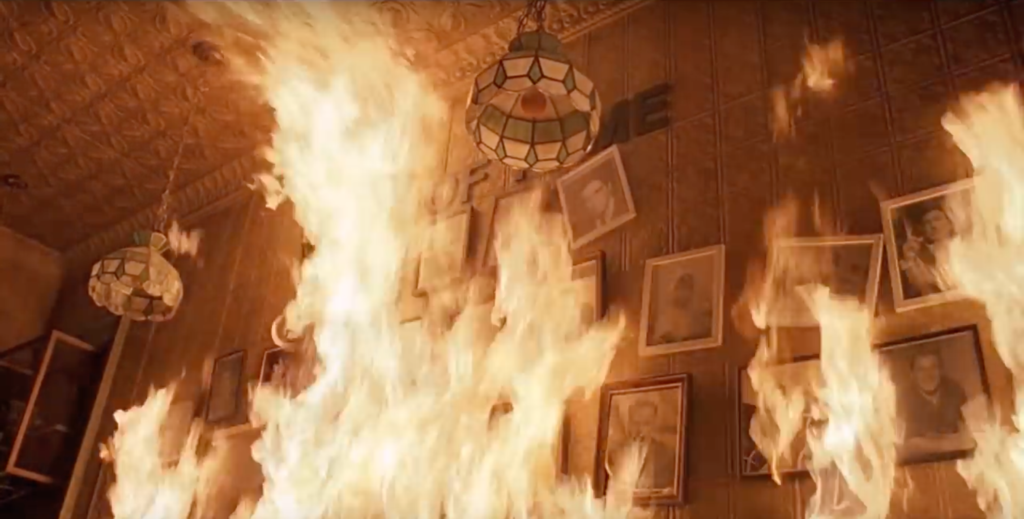
Seemingly unrelated, the three films at my festival are inspired by Megan Hess’s article in issue 8.1 of Film Matters titled: “Time Passes: How Neorealism Has Influenced Modern American Independent Filmmakers.” Connecting the films Night of the Living Dead (Romero, 1968), Do the Right Thing (Lee, 1989), and Little Miss Sunshine (Dayton and Faris, 2006), we travel through time with American independent films and make a connection in their seemingly common use of neorealism-inspired structures.
Hess uses a term from A. O. Scott called “Neo-Neorealism,” which she defines as “a label for the combination of traits he saw in American independent cinema” (Hess 80). These included “focusing on slices of life” (Hess 80) and “hav[ing] tragic or ambiguous finales” (Hess 81). These two elements of neorealism are seen in iconic neorealist films such as Bicycle Thieves (De Sica, 1949). This film follows a single day in Antonio’s (Lamberto Maggiorani) life as he searches for his stolen bicycle. We see nothing before or after this single day; we are focused only on this individual moment of his. The film ends with Antonio and his son walking away among the crowd. Antonio has not found his bicycle and we watch as he begins to cry. This sequence ends as “FINE” rises to the screen, leaving the audience wondering what Antonio’s future will hold for him after this day. Using those traits as key defining features, you can see a correlation between a lot of indie films and the commonalities in neorealist films of postwar Italy.
Night of the Living Dead focuses on a single night where characters are faced with the very real conflict of surviving it. Much like how Do the Right Thing focuses on one day in the neighborhood. While Little Miss Sunshine does not focus on one day, it shows only a short few days of an event; but these days reference and are largely affected by the span of the whole family’s life, which we do not witness. These films focus on short, impactful moments for the characters of the films, giving us a glimpse of the characters’ lives.
The endings of these films are set up to portray real situations that are not typical of classical Hollywood cinema. Night of the Living Dead is a perfect example, as every character died, even our one character that makes it through the night is inevitably shot by accident at the end of the film. A tragic ending, even for our hero, who we think has prevailed. Do the Right Thing and Little Miss Sunshine take the more ambiguous route. In Little Miss Sunshine,the young Olivia Hoover (Abigail Breslin), who dreams of being crowned Little Miss Sunshine, ends the film with her and her family being kicked out and banned from the competition; however, the family is seemingly happy and we watch them push their giant yellow van off down the road, unsure of where life will bring them next or if things will turn around for them. Do the Right Thing ends with a similar feeling of open-endedness as we watch the community burn down Sal’s Pizzeria. When Mookie (Spike Lee) returns the next morning and receives his pay, we watch him walk away from Sal (Danny Aiello) to return to his girlfriend’s home. We have no idea what is to come of the neighborhood or Sal’s Pizzeria or Mookie. In the end, we have a strong statement of the call to action Spike Lee was trying to make, and part of this was accomplished by his ambiguous ending.
These three films are, on the surface, polar opposites. However, looking at the structural similarities, I believe this bill of movies can highlight a trend in American independent films. The use of ambiguous and tragic narratives present in each film is similar to those of the traditional neorealist films. As well as the narratives focusing on one single moment of the characters’ much bigger lives. The comparison made by Hess of independent films in America and neorealist films of the 1940s highlights how cinema has aged and influenced itself.
Work Cited
Hess, Megan. “Time Passes: How Neorealism Has Influenced Modern American Independent Filmmakers.” Film Matters, vol. 8, no. 1, 2017, pp. 80-81.
Author Biography
Olivia Outlaw is a student at the University of North Carolina Wilmington. She studies film production with a minor in digital arts. She has been a fan and creator of the arts since a young age and has found a particular love for film while growing up.







































